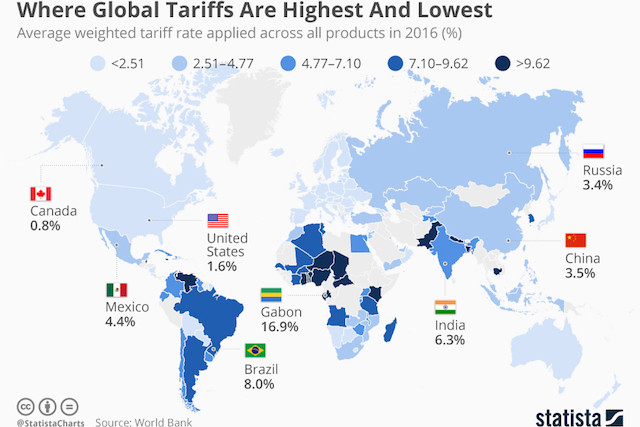Last week, President Trump signed an executive memorandum that could lead to tariffs being imposed on up to $60 billion of Chinese products, a move which is designed to penalize China for alleged intellectual property theft. Beijing responded that it while it does not want a trade war, it is “absolutely not afraid of one”.
The Trump Administrations’s move to impose tariffs on Chinese imports as well as steel and aluminum imports in general, is a break with long-standing U.S. trade policy.
Historically, previous presidents have been in favor of lower tariffs and the removal of barriers to facilitate trade. Today, the U.S. applies a weighted average tariff of 1.6 percent on its imports according to the World Bank and this is one of the lowest rates worldwide, equivalent to the EU and similar to Japan.
The World Bank’s tariff rates refer to 2016 and are weighted by product import shares without taking specific trade deals like NAFTA into account.
Although most developed countries have been pushing for lower trade tariffs, they are still very high in some parts of the world.
For example, India imposes weighted average tariffs of 6.3 percent while in China, the rate is 3.5 percent. African countries have some of the highest rates with Gabon standing out at 16.93 percent.
The Bahamas is the country with the highest weighted-average tariff worldwide at 18.6 percent.
